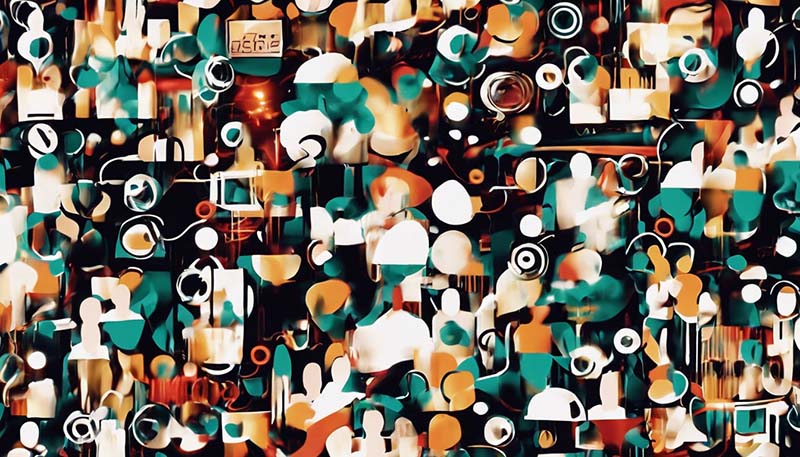Collaborative Design: The Power of the Team
Collaborative Design: The Power of the Team
Collaborative design is a process that involves a group of individuals working together to conceive, plan, and execute a design project. It leverages the strengths and perspectives of each team member to create a more robust and effective design solution. This article explores the principles and benefits of collaborative design, the challenges faced, and strategies for successful teamwork in the design process.
The Principles of Collaborative Design
Collaborative design is built on several key principles:
1. Shared Vision
The team must have a common understanding of the project's goals and objectives. This shared vision acts as a guide throughout the design process, ensuring that all contributions align with the project's intended outcome.
2. Open Communication
Effective communication is essential for collaborative design. Team members must be able to express their ideas, listen to others, and provide constructive feedback. This requires an environment that encourages transparency and respect.
Advertisement
3. Diversity of Skills
A collaborative design team benefits from a diverse skill set. Each member brings unique expertise, which, when combined, can lead to more innovative solutions than any single individual could achieve alone.
4. Iterative Process
The design process is iterative, with multiple cycles of feedback and refinement. This allows the team to continuously improve the design based on new insights and perspectives.
Benefits of Collaborative Design
Collaborative design offers numerous benefits, including:
1. Enhanced Creativity
A team with diverse backgrounds and skills can generate more creative ideas than a single individual. The exchange of different perspectives fosters innovation.
2. Improved Problem-Solving
When team members with different areas of expertise collaborate, they can approach problems from multiple angles, leading to more effective solutions.
3. Shared Responsibility
Collaborative design distributes the workload and responsibility among team members, which can reduce stress and increase job satisfaction.
4. Greater Efficiency
By combining efforts and leveraging each other's strengths, a team can often complete projects more quickly and efficiently than individuals working alone.
Challenges in Collaborative Design
While collaborative design has many advantages, it also presents challenges:
1. Coordination
Managing a team's efforts and ensuring everyone is working towards the same goal can be complex and time-consuming.
2. Conflict Resolution
Diverse opinions can lead to disagreements. Effective conflict resolution strategies are necessary to maintain a productive team environment.
3. Decision-Making
Reaching consensus in a group can be challenging, especially when team members have strong opinions or different priorities.
Strategies for Successful Collaborative Design
To overcome the challenges and maximize the benefits of collaborative design, consider the following strategies:
1. Establish Clear Roles and Responsibilities
Define each team member's role and responsibilities from the outset to avoid confusion and ensure everyone knows what is expected of them.

2. Foster a Culture of Respect and Openness
Create an environment where all team members feel comfortable sharing their ideas and opinions without fear of judgment or retribution.
3. Use Collaborative Tools
Leverage technology to facilitate communication, project management, and idea sharing. Tools like Trello, Slack, and Google Workspace can help keep the team organized and connected.
4. Encourage Regular Feedback
Implement a system for regular feedback and reviews. This allows the team to address issues early and adjust the design as needed.
5. Promote Team Building
Team-building activities can help establish trust and rapport among team members, which is crucial for effective collaboration.
Case Studies in Collaborative Design
Let's look at a few examples of how collaborative design has been successfully implemented:
1. Apple's Product Design
Apple is renowned for its collaborative approach to product design. Teams of designers, engineers, and marketers work closely to create products that are both functional and aesthetically pleasing.
2. Google's Workspace Environments
Google's office spaces are designed through a collaborative process that involves architects, designers, and employees. The result is a workspace that fosters creativity and collaboration.
3. The Design of the High Line in New York City
The transformation of the High Line from a disused railway line into a public park was a collaborative effort involving city planners, landscape architects, and the local community.
Conclusion
Collaborative design is a powerful approach to problem-solving that can lead to innovative, efficient, and effective design solutions. By embracing a shared vision, open communication, diversity of skills, and an iterative process, teams can overcome the challenges of collaboration and harness its many benefits. The strategies outlined above can guide teams towards a successful collaborative design process, resulting in projects that are greater than the sum of their parts.
Note: The images and case studies used in this article are for illustrative purposes and may require proper attribution or sourcing for use in a real-world application.
Leave a Reply